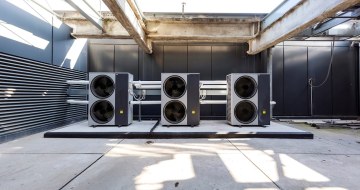
November 6, 2024 in Advisory Notes
Integrated Fire Mode Testing — Fundamental to Buildin...
Modern fire protection systems are now often integrated into other building systems and require a comprehensive testing approach to assure they will o...
December 1, 2013
Computer performance continues to increase significantly as does the demand on cooling and power supply infrastructure. Data Centres have been identified as significant users of energy and responsible for the associated Carbon emissions. Many data centres use up to around 45% of their energy consumption on support infrastructure services with cooling and power supply system’s the majority users.

Also as Data Centre capacity is increased it is often the performance and capability of the cooling and power infrastructure that is a limiting factor.
Improving the efficiency of Data Centre infrastructure can result in a range of benefits:

There are a number of best practice approaches that should be considered for improving the efficiency of existing facilities:
Set Point Temperatures – The American Society of Heating Refrigeration and Air-Conditioning Engineers have found that modern IT equipment can operate reliably at higher temperatures and have broadened their guideline IT operating temperature range out to 15oC to 32oC.
Airflow Management – The efficiency and effectiveness of a data centre cooling systems is heavily influenced by the, temperature and quantity of air delivered to the IT equipment. There are a number of options to improve the effectiveness of air flow;
Rack Layout – Poorly configured layouts can contribute to inefficient air flow and cooling air distribution and result in cooling units working harder. Aisle containment systems, rack chimney systems and floor pressure management can provide increases in cooling efficiencies and better utilisation of existing equipment.
Server Upgrades – New generation servers use less energy than traditional stand alone systems they also utilise variable speed cooling fans, have power saving modes and are able to operate at higher temperatures; all contributing to lower infrastructure energy usage.
Consolidation and virtualisation of servers – The resulting rationalisation of devices can reduce the ICT footprint; improve server and storage device utilisation and lower overall energy consumption.
New Cooling architectures – Shifting the cooling source closer to the heat source with new cooling solutions such as Inrow coolers or ICT cabinet rear door heat exchangers can reduce energy consumption associated with cooling.
Free Cooling Systems – New cooling solutions can incorporate direct or indirect free cooling solutions to leverage cooler outside temperatures to help cool the Data Centre.
Efficiency of Power Supply – Upgrading Uninterruptable Power Supply systems can result in reduced energy usage. Efficiencies of power supplies generally decrease with age and modern units are more energy efficient.
Lighting Systems – Modern lighting technologies and controls systems are very efficient, long lasting and reliable, and can result in useful energy usage improvements and maintenance cost reductions.
Trigeneration – The installation of gas fired tri-generation systems for large facilities can provide lower Carbon electricity. Cooling from reclaimed generation heat can reduce the environmental impact of a Data Centre, reduce energy costs and improve the security, site redundancy and availability of it power supply.
Refrigerated Computer Room Air Conditioning Units and Chillers – The latest refrigeration plant is significantly more energy efficient than earlier generation equipment and utilises low Ozone Depleting Potential and low Global Warming Potential refrigerants.
download pdf
November 6, 2024 in Advisory Notes
Modern fire protection systems are now often integrated into other building systems and require a comprehensive testing approach to assure they will o...

August 8, 2024 in Advisory Notes
Over the past decade, automated data analytics have been seamlessly integrated into various facets of our daily lives, including the operation and mai...

June 24, 2024 in Advisory Notes
Mould plays an important role in the natural environment as a break-down mechanism for dead organic matter. In the built environment it is an unwanted...

April 30, 2024 in Advisory Notes
A lot has changed since A.G. Coombs released our first Advisory Note on heat pumps back in 2018. Increasingly, asset owners are no longer asking if he...